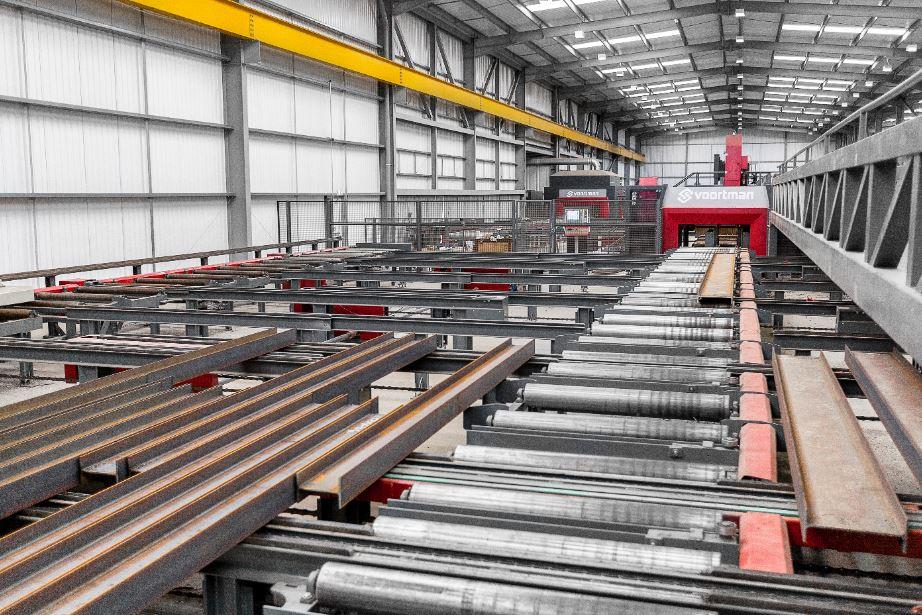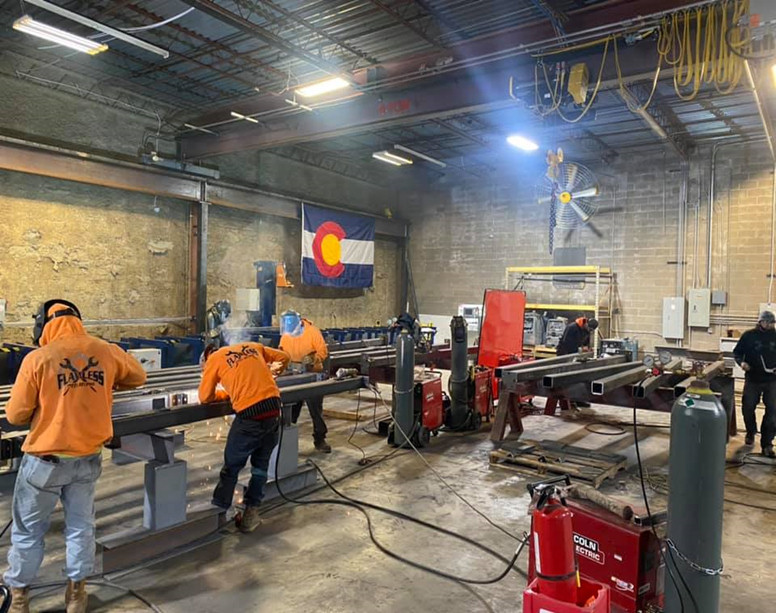Alpha Reo: Blazing A Trail in Reinforced Steel Solutions
Alpha Reo: Blazing A Trail in Reinforced Steel Solutions
Blog Article
Comprehensive Analysis of Cutting-Edge Techniques in Steel Manufacture Market
As the steel construction sector remains to develop, the assimilation of innovative techniques has actually become essential for remaining competitive and satisfying the needs of contemporary production requirements. From laser reducing developments to the utilization of robotics and 3D printing in steel production, the landscape of fabrication methods is swiftly altering. With each innovation bringing its own collection of advantages and obstacles, a detailed evaluation of these strategies is critical for firms intending to enhance their procedures, enhance accuracy, and ultimately, raise the top quality of their steel fabrication outcome. In this vibrant industry where innovation plays a crucial role, comprehending the subtleties of these advanced methods is not simply an option however a requirement for those aiming to forge ahead in the ever-evolving globe of steel manufacture.
Laser Reducing Innovations
In the world of steel manufacture, laser reducing innovations have actually changed the accuracy and effectiveness of steel shaping processes. By taking advantage of the power of concentrated laser beam of lights, makers can currently accomplish unmatched degrees of precision when cutting through various sorts of steels. This innovation allows complex styles to be executed with minimal product waste, making it a cost-efficient remedy for markets requiring high precision parts.
One of the essential benefits of laser cutting is its capacity to deal with a broad range of products, including stainless steel, light weight aluminum, and carbon steel, easily. The process generates clean, burr-free edges, removing the requirement for additional ending up steps. The non-contact nature of laser cutting lowers the danger of material contamination, resulting in greater quality end items.
Furthermore, laser reducing devices can be set to make swift, exact cuts, significantly lowering production time contrasted to conventional reducing methods. This rate and precision make laser reducing especially ideal for automation settings where performance is paramount. As modern technology remains to development, laser cutting is poised to play a significantly vital role in the steel fabrication sector.

CNC Machining Innovations
The development of CNC machining technologies has introduced a brand-new period of precision and effectiveness in the steel construction sector. Computer System Numerical Control (CNC) machines have reinvented steel manufacture by offering exceptional precision and repeatability in the production procedure. Alpha reo. One of the essential developments in CNC machining is the combination of sophisticated software program systems that make it possible for real-time surveillance and changes, leading to enhanced productivity and quality control
Additionally, the development of multi-axis CNC devices has enabled the fabrication of complex steel components with intricate layouts that were formerly testing to create. These makers can carry out a large range of machining operations, consisting of milling, exploration, transforming, and grinding, all with high levels of precision.
Moreover, the unification of automation and robotics in CNC machining has structured manufacturing processes, reduced preparations, and decreased the margin of mistake. This integration of cutting-edge modern technologies not just increases efficiency but additionally makes sure consistent top quality throughout all fabricated steel components. Finally, CNC machining advancements remain to drive innovations in the steel construction industry, establishing new criteria for accuracy and productivity.
Automated Welding Technologies
Automated welding modern technologies have revolutionized the steel construction industry, boosting efficiency and accuracy in the welding process. These sophisticated innovations utilize computer-controlled systems to automate the welding procedure, leading to greater productivity degrees and improved weld high quality. Among the essential benefits of automated welding is the capacity to carry out intricate welds with consistent precision, reducing the probability of errors and remodel.
Robot welding systems are at the leading edge of automated welding modern technologies, providing unparalleled speed and accuracy. These systems can take care of a large range of welding tasks, from basic to intricate, easily (Alpha reo). By utilizing innovative sensors and software application, robot welders can adapt to variants in product and joint geometry, guaranteeing an uniform and reliable weld
Furthermore, automated welding technologies boost work environment safety by minimizing the exposure of human welders to harmful fumes and intense warm. As the steel construction visit this site sector proceeds to evolve, incorporating automated welding innovations will certainly be important for companies seeking to remain affordable and fulfill the expanding needs for high-quality welded products.
Robotics Integration in Fabrication
Utilizing robotic systems in fabrication processes has become a pivotal strategy for enhancing efficiency and accuracy in modern-day production settings. Robotics combination in steel construction uses a myriad of benefits, including increased productivity, boosted top quality control, and boosted precaution. These sophisticated robotic systems are equipped with sophisticated sensing units and programs abilities, allowing them to perform detailed jobs with a high degree of accuracy and repeatability.
Among the crucial advantages of robotics integration in steel fabrication is the capacity to automate repeated tasks, such as product handling, reducing, welding, and assembly procedures. This not only speeds up manufacturing cycles however also lowers the danger of human error, bring about greater overall item high quality. In addition, robotics can operate 24/7, dramatically improving production result and meeting limited job target dates.

3D Printing in Steel Manufacturing
Having reinvented the steel fabrication industry with Look At This robotics assimilation, the burgeoning exploration of 3D printing in steel manufacturing is positioned to more advance the realm of contemporary production strategies. 3D printing, additionally called additive manufacturing, provides unmatched layout liberty and intricacy, enabling the creation of elaborate steel structures that were previously unattainable with standard production approaches. By making use of computer-aided layout (CAD) software, makers can precisely control the layer-by-layer deposition of steel material, causing components with improved functionalities and geometries.
One of the essential advantages of 3D printing in steel production is its capacity to reduce material waste considerably. Unlike subtractive manufacturing processes where excess material is cut away, 3D printing just makes use of the needed quantity of steel required for the final component. This performance not just causes set you back savings but also straightens with lasting manufacturing practices by reducing environmental influence.
Additionally, 3D printing allows fast prototyping and customization, permitting the manufacturing of little batches of intricate steel parts with short lead times. As the modern technology remains to mature and come to be a lot more easily accessible, its integration right into mainstream steel construction processes is anticipated to drive advancement and efficiency across the sector.
Final Thought
Finally, the steel fabrication industry has seen considerable improvements in strategies such as laser cutting, CNC machining, automated welding, robotics assimilation, and 3D printing. These sophisticated technologies have transformed the method steel products are produced, resulting in boosted cost-effectiveness, precision, and efficiency. Continued investment in these innovative strategies is crucial for the sector to remain affordable and satisfy the demands of modern manufacturing processes.
As the steel manufacture sector proceeds to develop, the integration of cutting-edge techniques has actually ended up being necessary for staying competitive and fulfilling the needs of contemporary manufacturing standards.One of the vital benefits of laser cutting is its capability to handle a broad range of products, including stainless steel, aluminum, and carbon steel, with convenience.Automated welding innovations have changed the steel manufacture market, boosting effectiveness and precision in the welding process.Having actually transformed the steel fabrication sector through robotics assimilation, the blossoming exploration of 3D printing in steel production is poised to more development the realm of modern-day manufacturing strategies.In final thought, the steel fabrication market has seen considerable advancements in strategies such as laser Go Here cutting, CNC machining, automated welding, robotics integration, and 3D printing.
Report this page